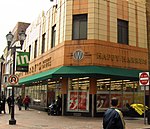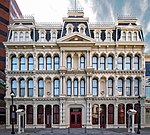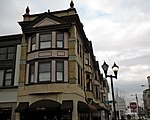Burton v. Wilmington Parking Authority
1961 in United States case lawAfrican-American history of DelawareCivil rights movement case lawDelaware state case lawGarages (parking) in the United States ... and 5 more
United States Supreme Court casesUnited States Supreme Court cases of the Warren CourtUnited States equal protection case lawUnited States racial desegregation case lawWilmington, Delaware
Burton v. Wilmington Parking Authority, 365 U.S. 715 (1961), was a United States Supreme Court case that decided that the Equal Protection Clause applies to private business that operates in a relationship to a government that is close to the point that it becomes a "state actor."
Excerpt from the Wikipedia article Burton v. Wilmington Parking Authority (License: CC BY-SA 3.0, Authors).Burton v. Wilmington Parking Authority
West Girard Street, Wilmington
Geographical coordinates (GPS) Address Nearby Places Show on map
Geographical coordinates (GPS)
| Latitude | Longitude |
|---|---|
| N 39.745 ° | E -75.5496 ° |
Address
The Residents at Midtown Park
West Girard Street
19801 Wilmington
Delaware, United States
Open on Google Maps










